The world’s rainforests are some of our planet’s most vibrant and vital ecosystems, offering unparalleled biodiversity and awe-inspiring landscapes. From the vast expanses of the Amazon and Congo to the lesser-known but equally enchanting rainforests in Southeast Asia and Central America, these natural wonders invite adventurers to explore their dense canopies, unique wildlife, and the cultures that thrive within them. This guide explores 15 rainforest destinations, each offering a unique window into the heart of our planet’s green lungs.
1. The Amazon Rainforest, Brazil
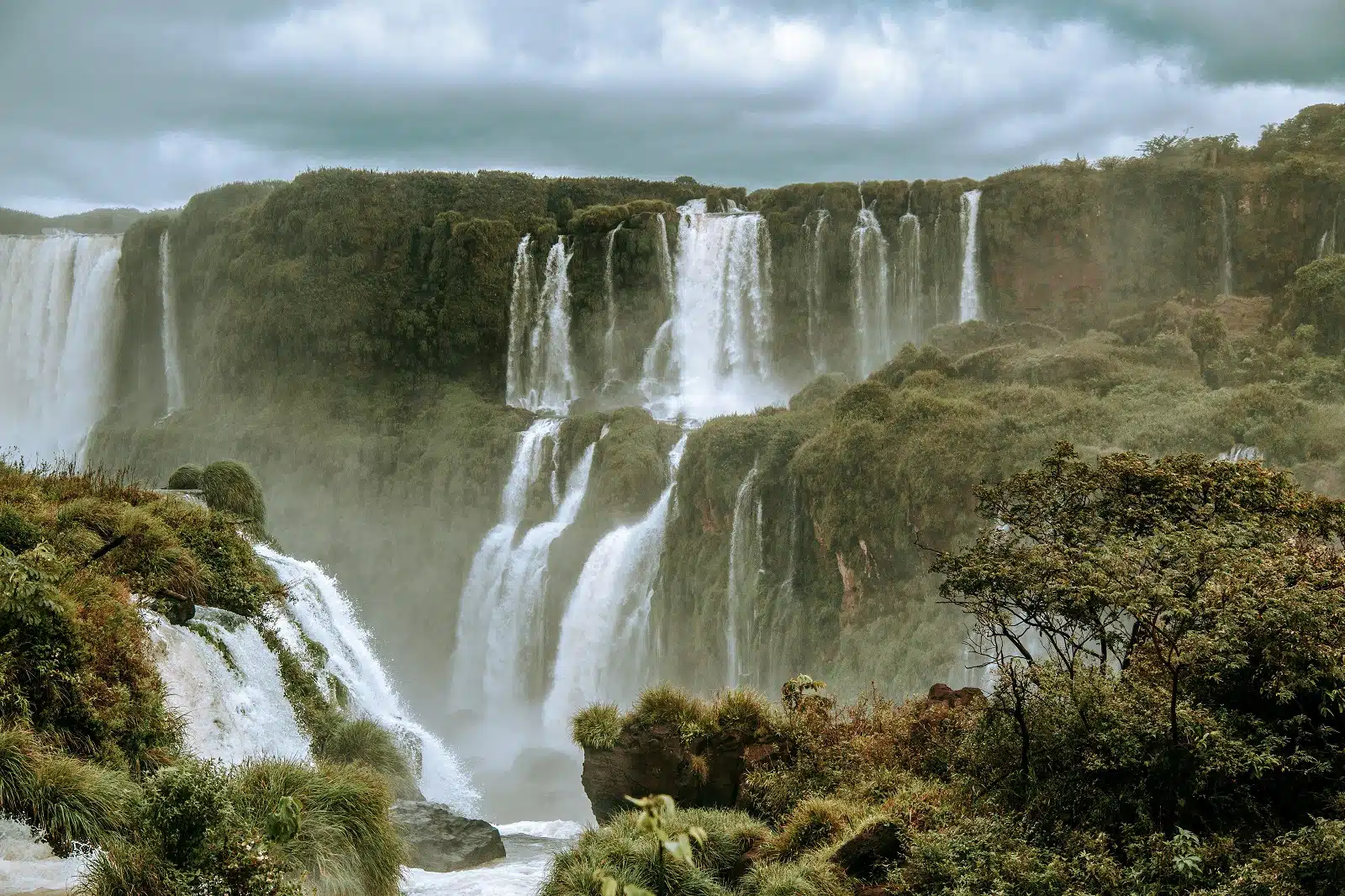
Image Credit: pexels / Diego Rezende
The Amazon Rainforest, a vast green expanse that stretches across several South American countries, is a marvel of biodiversity. Brazil encompasses a network of rivers, dense rainforest, and an unparalleled variety of wildlife. As you navigate its waterways, you’ll likely encounter exotic birds, monkeys, and perhaps even the elusive jaguar. The Amazon is not just about flora and fauna; it’s also home to indigenous tribes whose cultures and ways of life offer a unique perspective on living in harmony with nature. Trekking through the jungle, you’ll be enveloped by the sounds of the rainforest, from the calls of howler monkeys to the rustling of leaves in the canopy above.
Insider’s Tip
Consider a stay in an eco-lodge for a more sustainable and authentic rainforest experience.
How to Get There
Fly into Manaus, Brazil, which is a common starting point for Amazon tours.
When to Travel
The dry season from June to October is ideal for wildlife viewing and hiking.
2. The Congo Rainforest, Central Africa
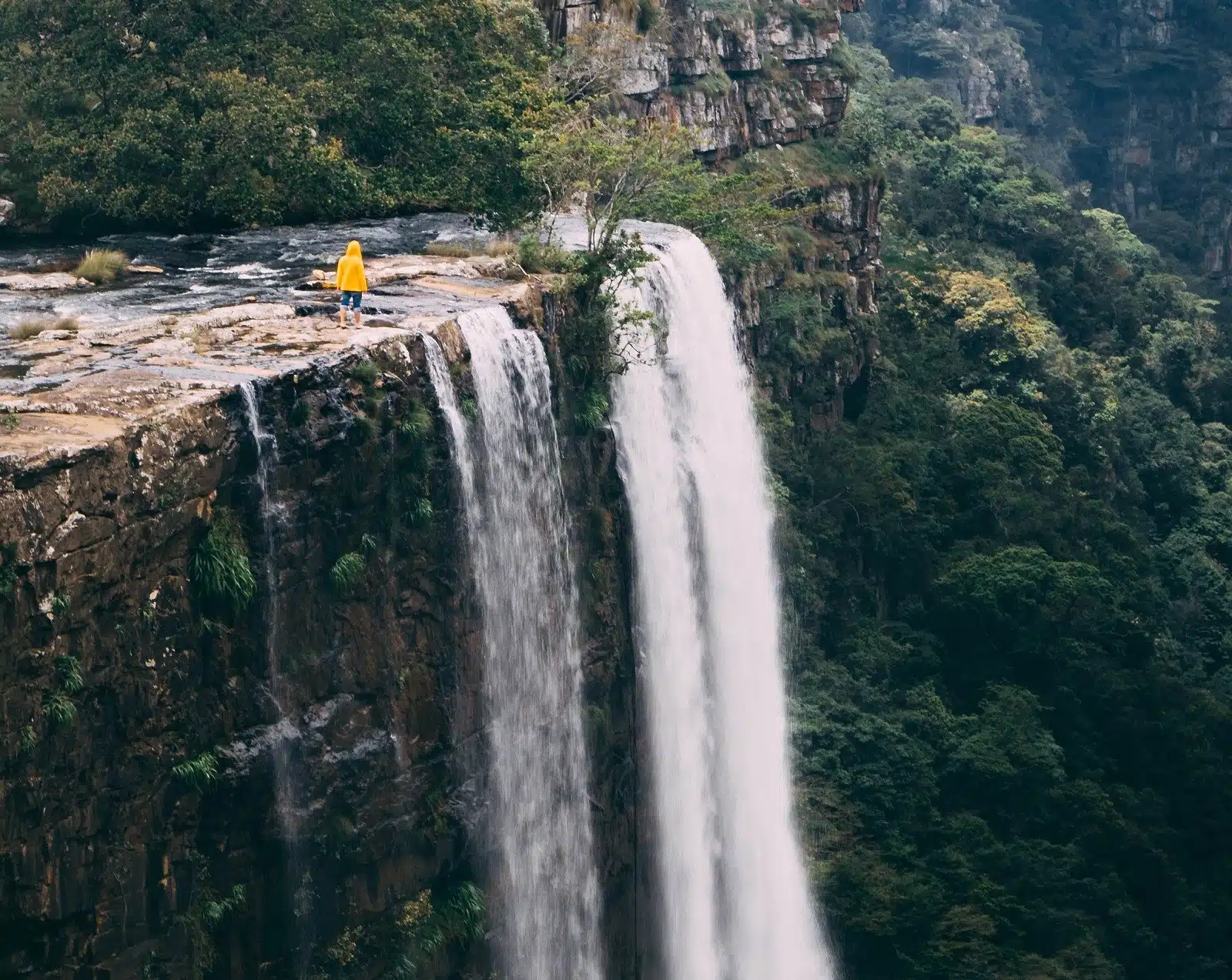
Image Credit: pexels / Taryn Elliott
The Congo Rainforest, sprawling across Central Africa, is a world of its own. This vast expanse of dense jungle is teeming with life, including forest elephants, gorillas, and a myriad of bird species. The experience of being in the Congo is intense and immersive; the humidity, the air’s richness, and the rainforest’s chorus create a sensory overload. Visiting the Congo Basin is as much about witnessing its wildlife as it is about understanding the conservation challenges in this region. The rainforest is a crucial part of the local ecosystem and plays a significant role in the global environment.
Insider’s Tip
Hiring a local guide is essential for navigating the dense jungle and enhancing your understanding of the ecosystem.
How to Get There
Access varies by country; Kinshasa (DR Congo) and Brazzaville (Republic of Congo) are common entry points.
When to Travel
The dry season from June to August is the best time for wildlife viewing.
3. Daintree Rainforest, Australia
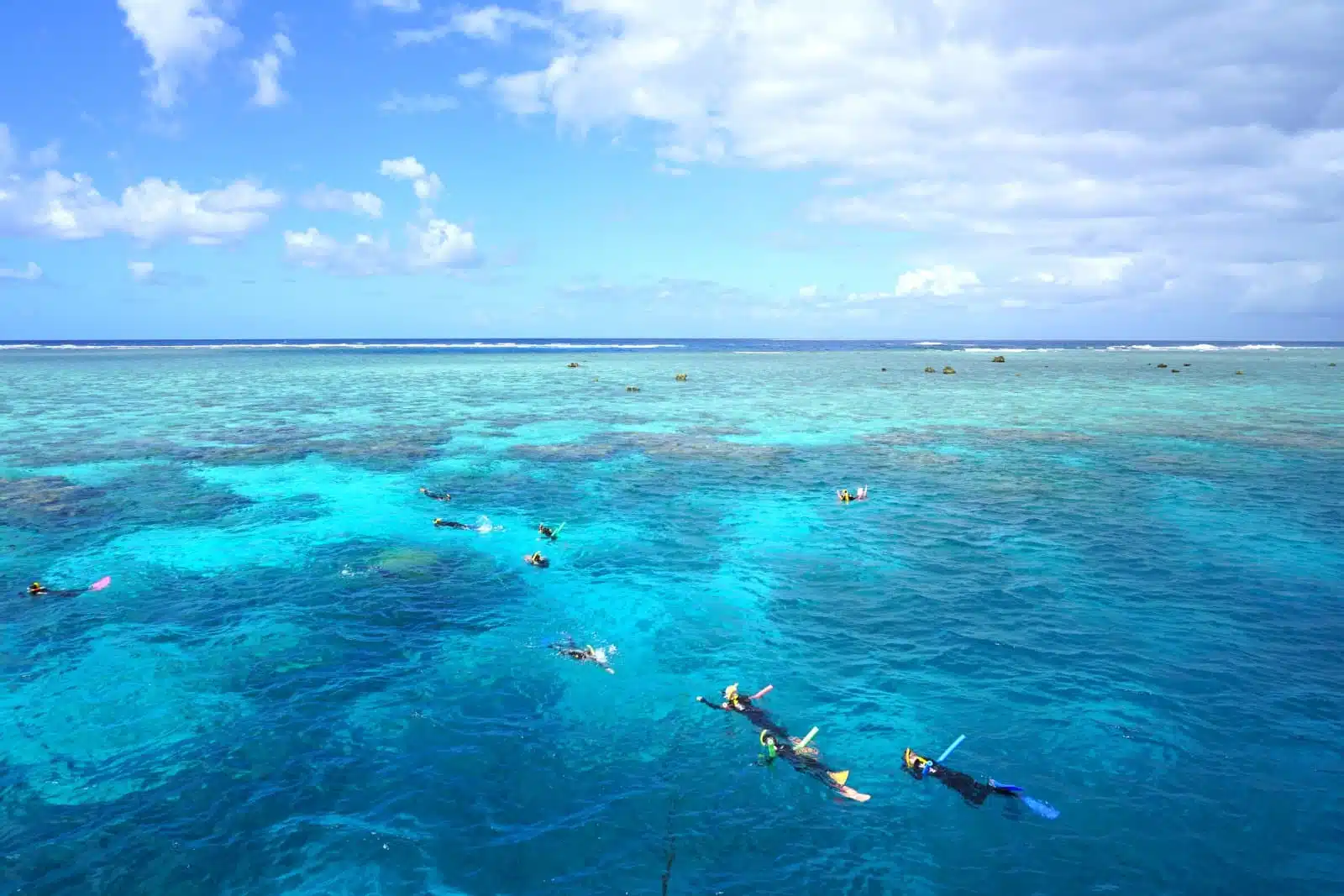
Image Credit: Shutterstock / EQRoy
Australia’s Daintree Rainforest uniquely blends ancient ferns, emerald green vines, and lush canopy. This UNESCO World Heritage site offers a journey back in time, being one of the oldest rainforests on the planet. Here, you can explore a network of hiking trails that lead to secluded waterfalls and serene streams. The Daintree is also a haven for bird watchers, with species like the Southern Cassowary adding a prehistoric feel to the forest. The interaction between the rainforest and the Great Barrier Reef, just offshore, highlights the interconnectedness of ecosystems.
Insider’s Tip
Explore the Mossman Gorge for stunning scenery and swimming opportunities.
How to Get There
Fly into Cairns and drive north to the Daintree region.
When to Travel
The cooler, drier months from May to September are ideal for visiting.
4. Monteverde Cloud Forest, Costa Rica
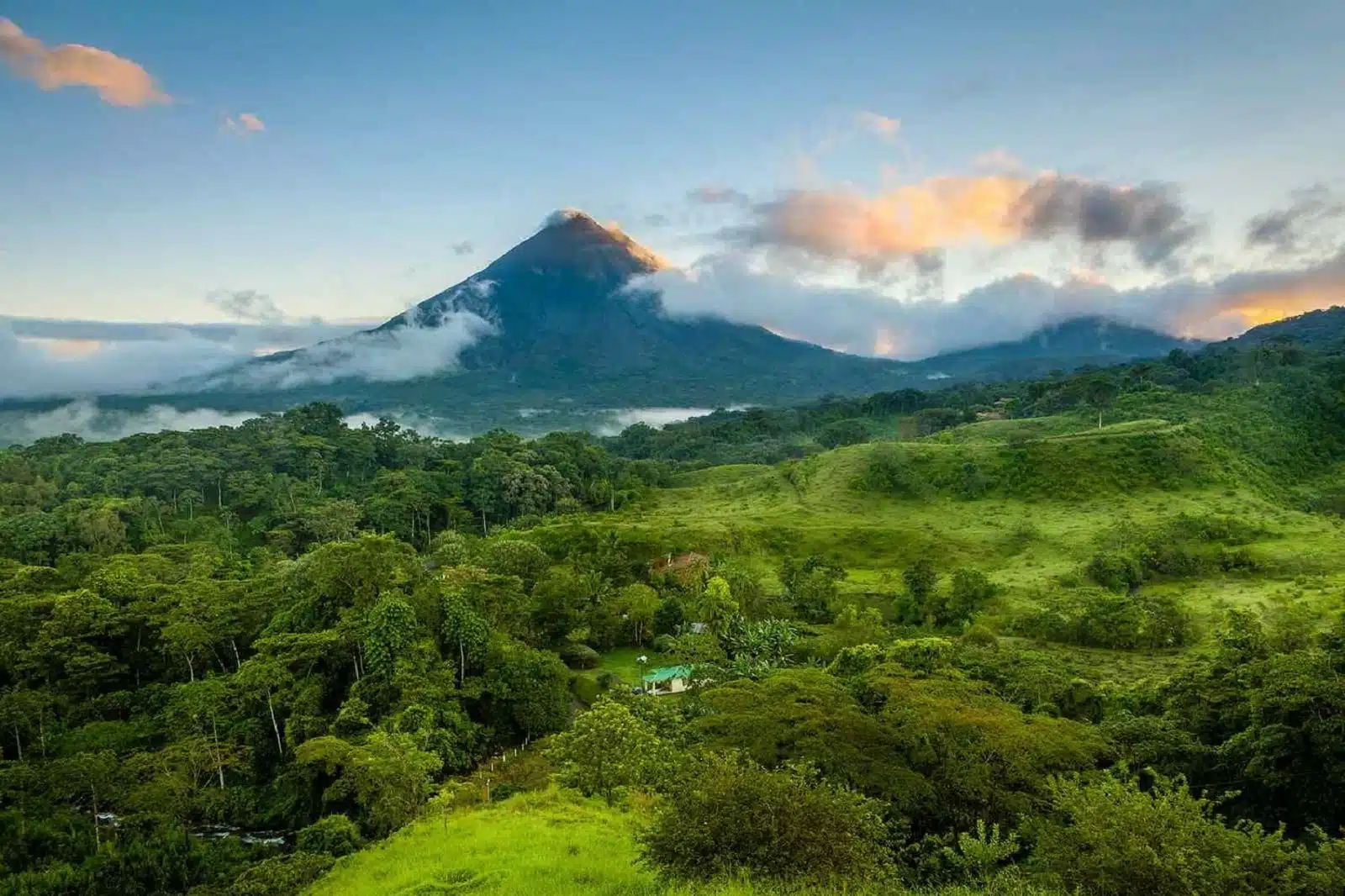
Image Credit: Shutterstock / Alexey Stiop
Monteverde Cloud Forest in Costa Rica is a misty, ethereal world where the forest floor is often shrouded in clouds. This high-altitude rainforest is home to a dizzying array of biodiversity, including over 400 species of birds, like the colorful quetzal. Walking through Monteverde, you’ll be surrounded by towering trees and hanging vines, with the chance to spot rare orchids and butterflies. The cloud forest’s unique climate and elevation create a haunting and beautiful habitat. The area is also known for its sustainable tourism practices, crucial in preserving this delicate ecosystem.
Insider’s Tip
Take a night tour to experience the forest’s nocturnal wildlife.
How to Get There
Fly into San José, followed by a drive or shuttle to Monteverde.
When to Travel
The dry season from December to April offers clearer skies and better hiking conditions.
5. Kinabalu Park, Malaysia
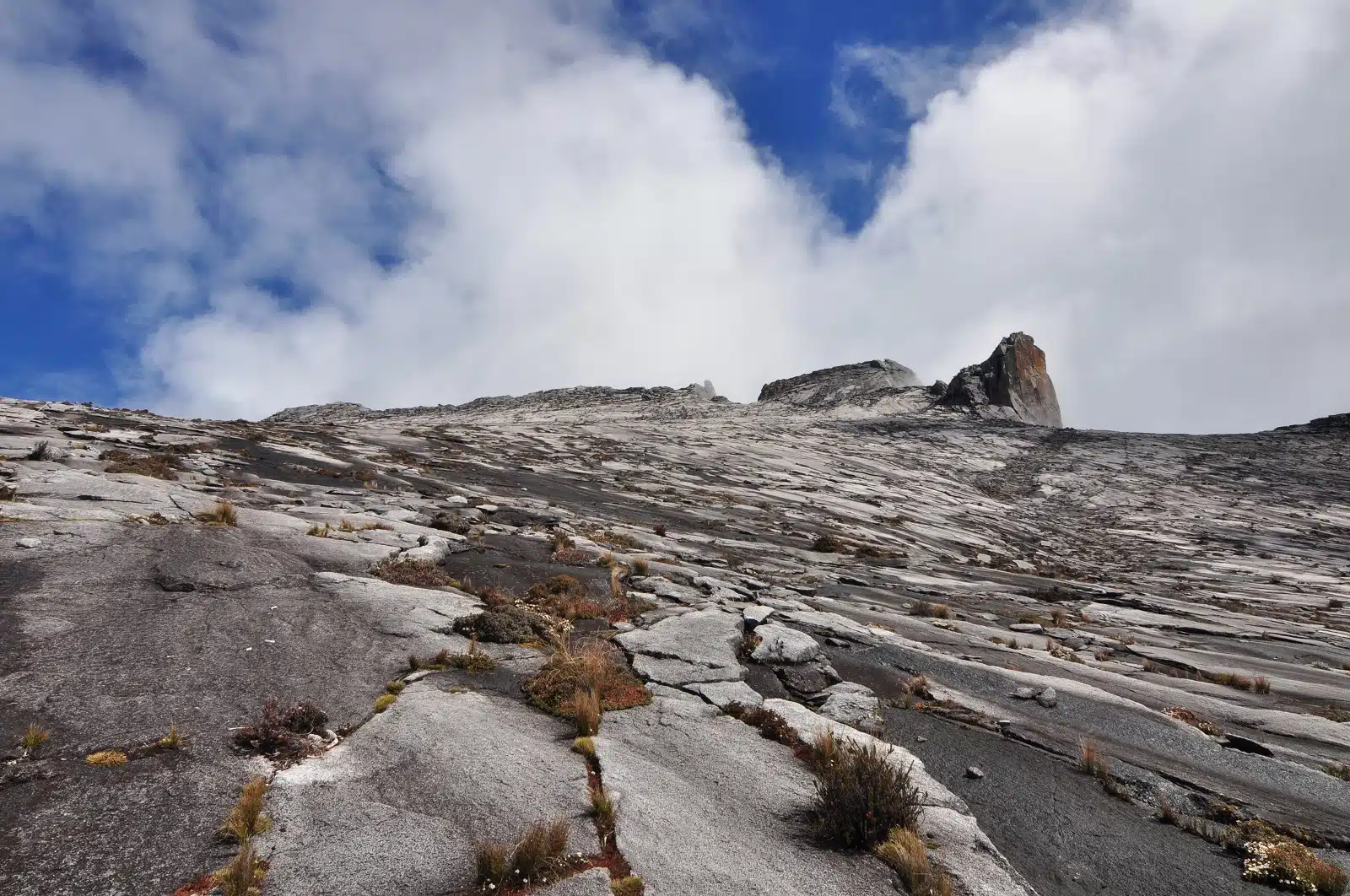
Image Credit: Pexels / Nadzrin
Kinabalu Park in Malaysian Borneo is a treasure trove of ecological diversity. Dominated by Mount Kinabalu, the highest peak in Southeast Asia, the park is a mosaic of different habitats, from tropical lowland rainforests to alpine meadows. Trekking in Kinabalu Park can be a challenging but rewarding experience, offering spectacular views and the chance to encounter rare wildlife and exotic plants. The park is renowned for its incredible variety of orchids and carnivorous pitcher plants. A visit here is a journey through diverse ecosystems and an insight into the conservation efforts needed to protect these natural wonders.
Insider’s Tip
Book your Mount Kinabalu climb well in advance, as permits are limited.
How to Get There
Fly into Kota Kinabalu and then travel by road to the park.
When to Travel
Avoid the rainy season; March to September are the best months for climbing and trekking.
6. Sinharaja Forest Reserve, Sri Lanka
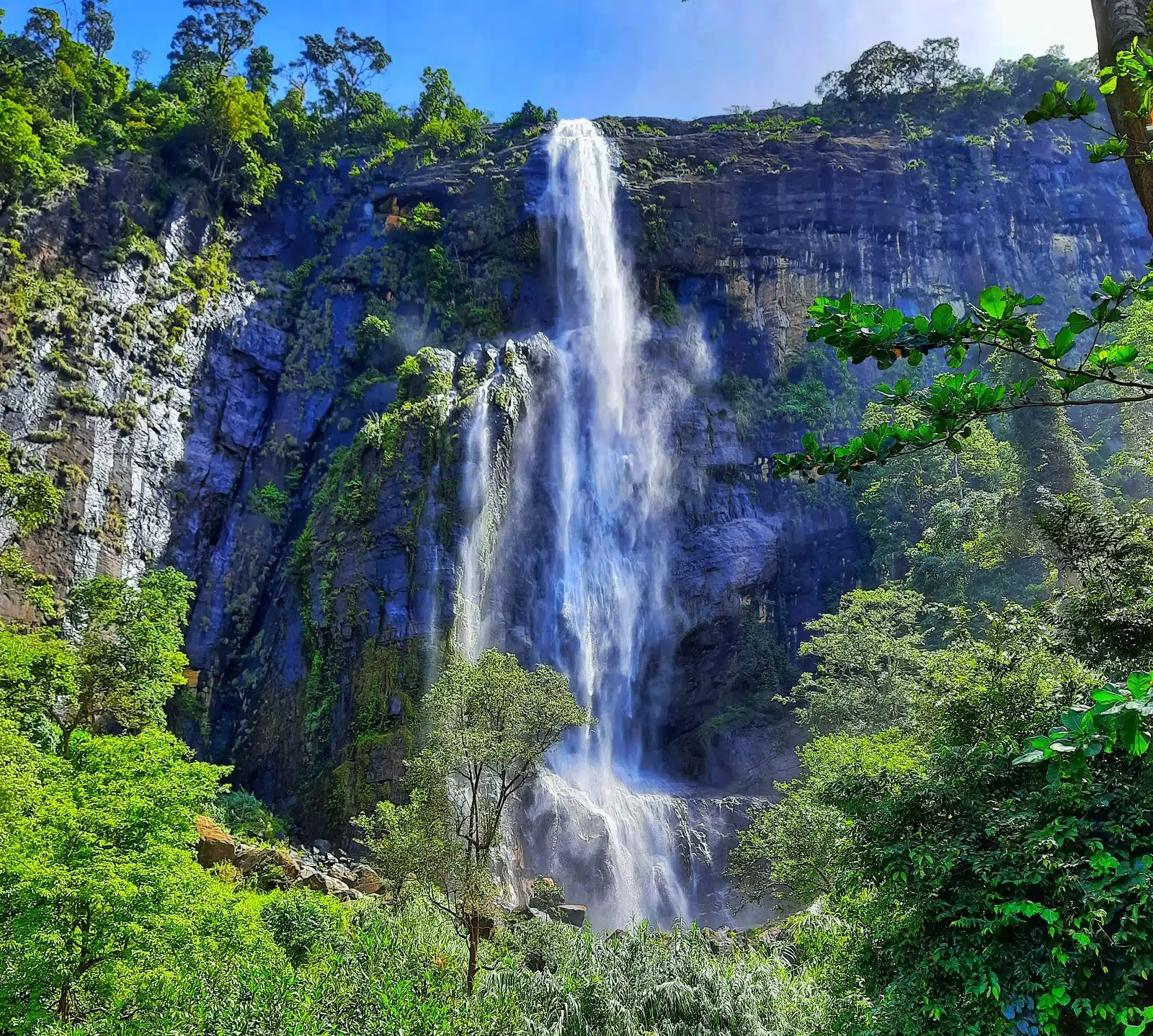
Image Credit: Pexels / Kusal Kodagoda
Sinharaja Forest Reserve in Sri Lanka, a UNESCO World Heritage site, is a biodiversity hotspot crucial for conserving the island’s endemic species. This lowland rainforest is dense and humid, with a canopy that’s alive with the sounds of birds and insects. Trekking through Sinharaja, you might spot rare birds, elusive mammals, and a variety of amphibians and reptiles. The forest is also home to a rich array of plant life, including towering hardwood trees and delicate ferns. The experience of being in Sinharaja is one of being completely enveloped by nature, offering a true escape into the wild.
Insider’s Tip
Engage a local guide for a more informative trekking experience, as they can help spot and identify wildlife.
How to Get There
The reserve is accessible from Galle or Colombo by road.
When to Travel
The best time to visit is during the drier months, from August to September and January to April.
7. Yasuni National Park, Ecuador
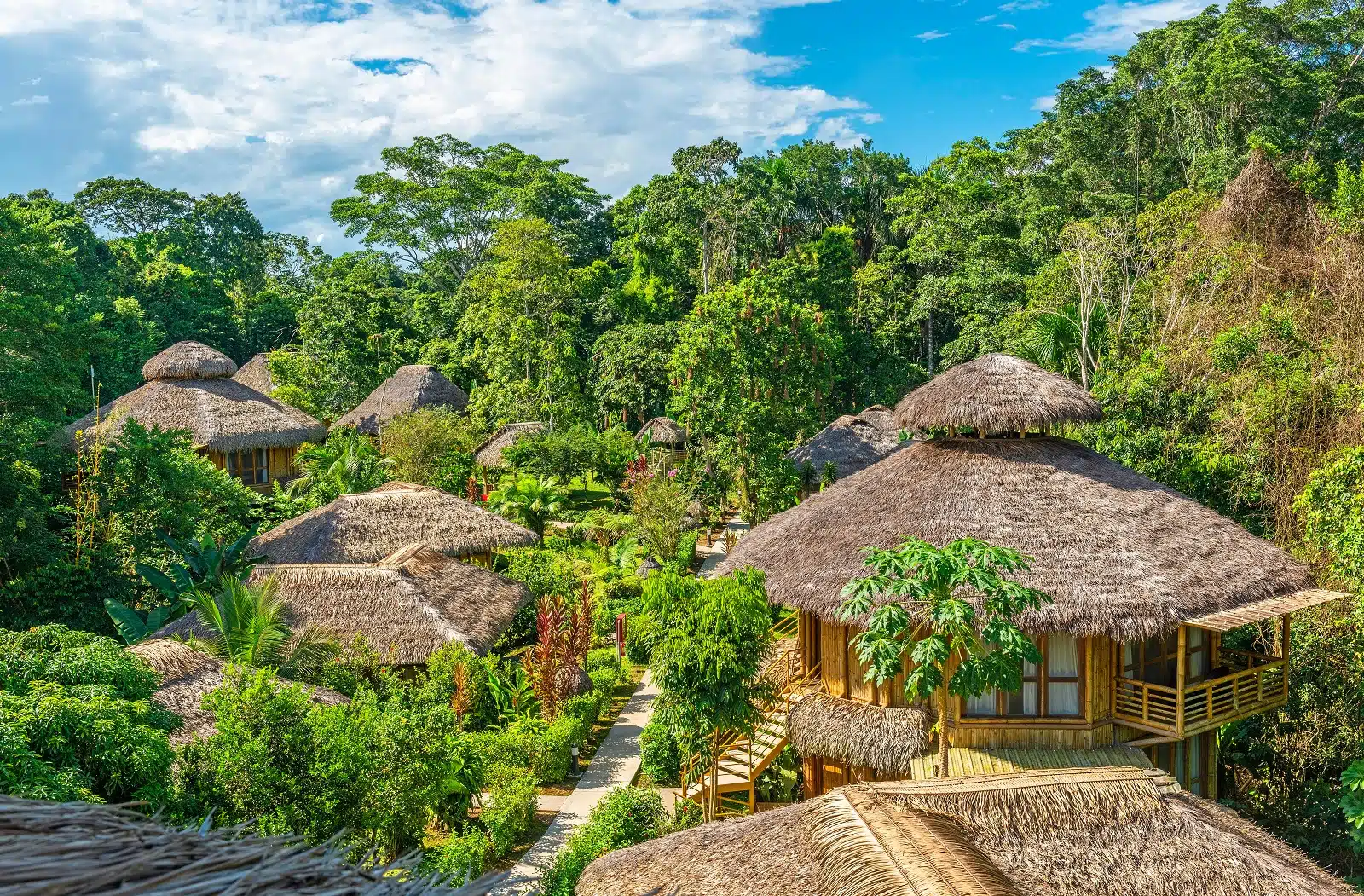
Image Credit: Shutterstock / SL-Photography
Yasuni National Park in Ecuador’s Amazon basin is one of Earth’s most biologically diverse places. This rainforest sanctuary is home to a staggering array of wildlife, including hundreds of bird species, monkeys, jaguars, and caimans. Exploring Yasuni, whether by boat along its rivers or on foot through its dense jungle, is an adventure in every sense. The park is also significant for its indigenous communities, who maintain their traditional ways of life. Yasuni is a place where the natural world feels both ancient and vibrantly alive, offering an unparalleled opportunity to connect with the primal forces of nature.
Insider’s Tip
Participate in a birdwatching tour early in the morning for the best sightings.
How to Get There
Fly to Quito, followed by a flight to Coca and a boat ride into the park.
When to Travel
The drier months from December to March are ideal for visiting.
8. Taman Negara, Malaysia
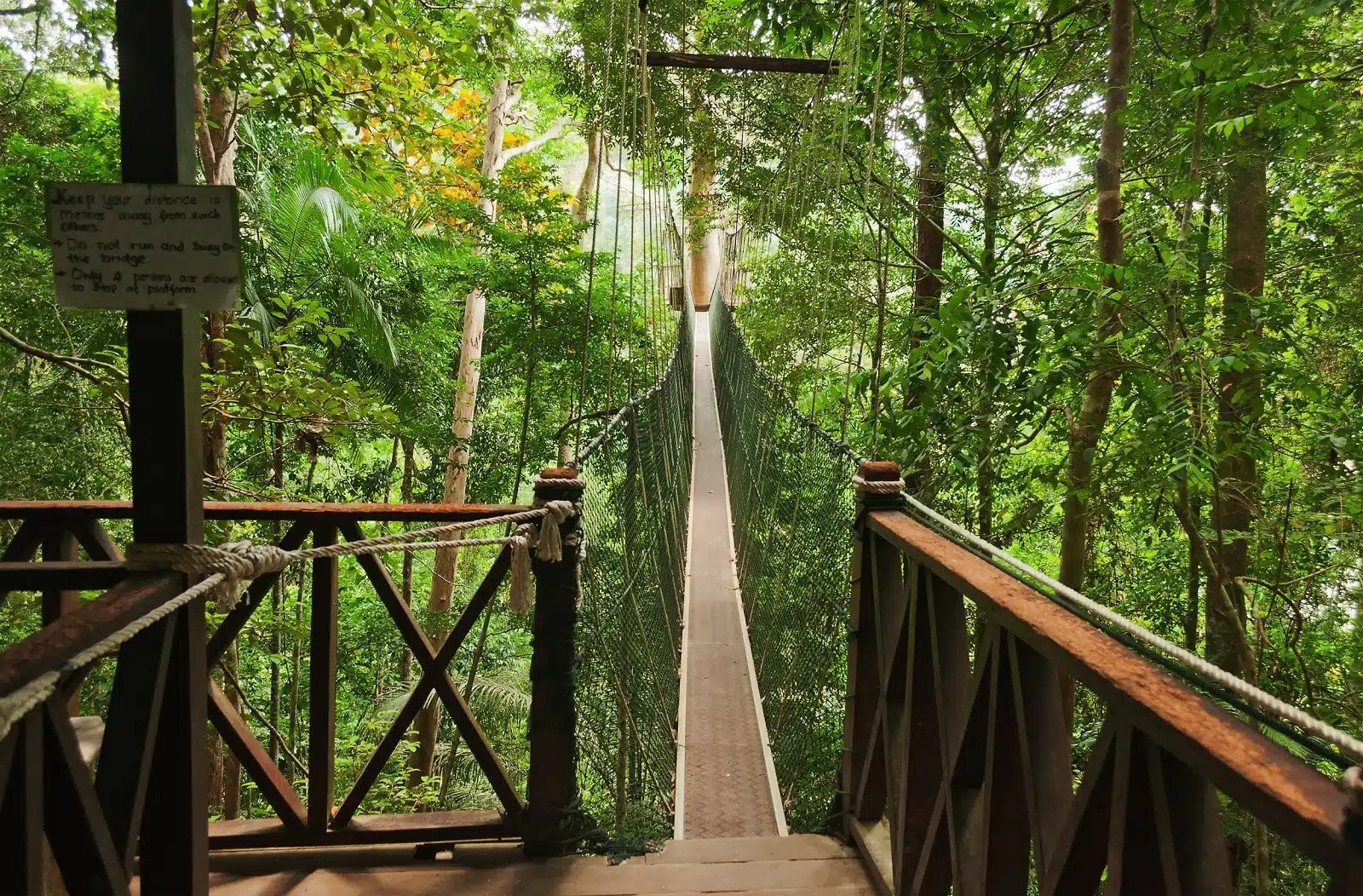
Image Credit: Shutterstock / Elena Odareeva
Taman Negara, which translates to “National Park” in Malay, is one of the world’s oldest tropical rainforests. This vast park encompasses a sprawling network of rivers, waterfalls, and dense jungle. Exploring Taman Negara is a true adventure, with activities ranging from night safaris to canopy walks high above the forest floor. The park is home to a rich variety of wildlife, including tigers, elephants, and exotic birds. The experience of being in Taman Negara is one of awe and respect for the natural world, offering a glimpse into the complexity and beauty of tropical ecosystems.
Insider’s Tip
Try the canopy walkway for a unique perspective of the rainforest.
How to Get There
Accessible from Kuala Lumpur by bus or car to Kuala Tahan, the main entry point to the park.
When to Travel
Avoid the monsoon season; February to September are the best months to visit.
9. Harapan Rainforest, Indonesia
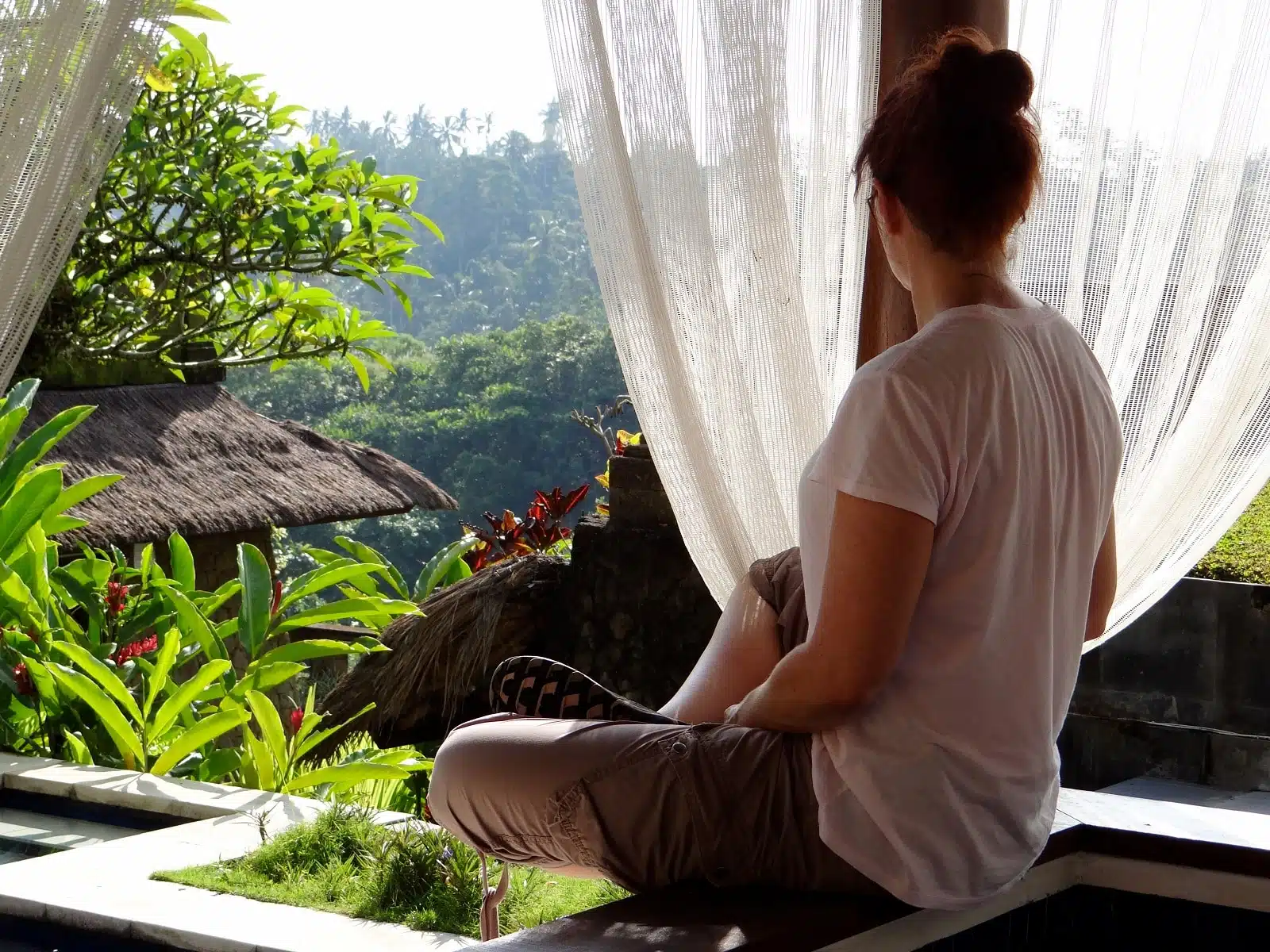
Image Credit: Shutterstock / MARILYN COOK
Harapan Rainforest in Sumatra, Indonesia, represents a significant effort in rainforest conservation and restoration. This vast area of tropical jungle offers a haven for wildlife, including Sumatran tigers, elephants, and a diverse array of bird species. Visiting Harapan is not just about experiencing the rainforest’s natural beauty; it’s also about understanding the importance of conservation efforts in these critical ecosystems. The forest’s dense canopy, vibrant birdlife, and the occasional glimpse of larger wildlife make for an unforgettable experience.
Insider’s Tip
Take guided walks to learn about the conservation efforts and spot wildlife.
How to Get There
Fly to Jambi or Palembang, and then travel by road to the forest.
When to Travel
The dry season from June to September is the best time to visit.
10. Manu National Park, Peru

Image credit: Shutterstock / Mike Treglia
Manu National Park in Peru is a biodiverse wonderland, encompassing Andean highlands, cloud forests, and lowland tropical rainforests. This UNESCO World Heritage site is one of the best places in the Amazon basin for wildlife viewing, with opportunities to see jaguars, tapirs, and several monkey species. The park’s vastness and variety of habitats make it a prime destination for birdwatchers and nature enthusiasts. Exploring Manu is a journey into the heart of the Amazon, offering an immersive experience in one of the most untouched rainforests on the planet.
Insider’s Tip
Opt for a multi-day tour to fully experience the diversity of the park.
How to Get There
Access is typically via Cusco, with a combination of road and river travel.
When to Travel
The dry season from May to October is the best time for accessibility and wildlife viewing.
11. The Rainforests of Madagascar
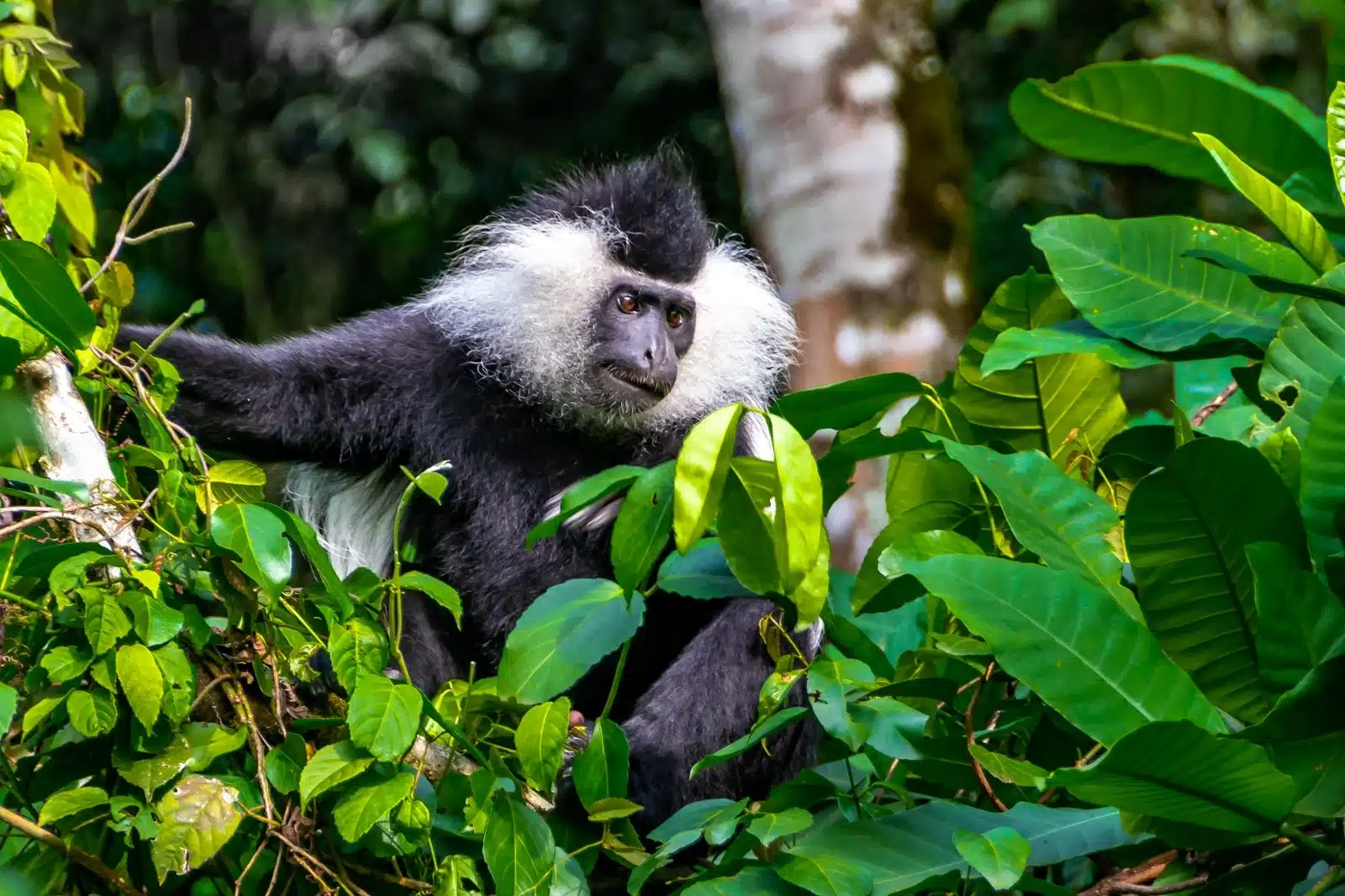
Image Credit: Shutterstock / Tetyana Dotsenko
Madagascar’s rainforests are a world apart, with an astonishing 80% of its wildlife endemic to the island. The national parks of Andasibe and Ranomafana are particularly notable for their lemur populations, offering a chance to see these unique primates in their natural habitat. The island’s rainforests are a kaleidoscope of biodiversity, with chameleons, orchids, and myriad bird species adding to the vibrancy of the ecosystem. Exploring these forests is a journey into a land that has evolved in isolation, creating a natural world that is both strange and wonderful.
Insider’s Tip
Hire a local guide to spot and learn about the unique species of Madagascar.
How to Get There
Fly to Antananarivo, Madagascar’s capital, and travel to the national parks by road.
When to Travel
The best time to visit is during the dry season, from April to December.
12. The Atlantic Rainforest, Brazil

Image Credit: Shutterstock / Valentin Ayupov
The Atlantic Rainforest in Brazil, stretching along the country’s Atlantic coast, is a rich and diverse ecosystem teeming with life. Although it has been largely overshadowed by the Amazon, this rainforest is home to an incredible array of endemic species. The forest’s proximity to major cities like Rio de Janeiro and São Paulo makes it an accessible destination for exploring Brazil’s natural heritage. The Atlantic Rainforest offers a mix of coastal scenery, mountainous terrain, and dense jungle, providing visitors a varied and enriching experience.
Insider’s Tip
Visit the Instituto Inhotim, a contemporary art museum in the forest, for a unique combination of art and nature.
How to Get There
Access varies by region; São Paulo and Rio de Janeiro are good starting points for different parts of the forest.
When to Travel
The cooler, drier months from April to October are ideal for exploring.
13. Khao Sok National Park, Thailand
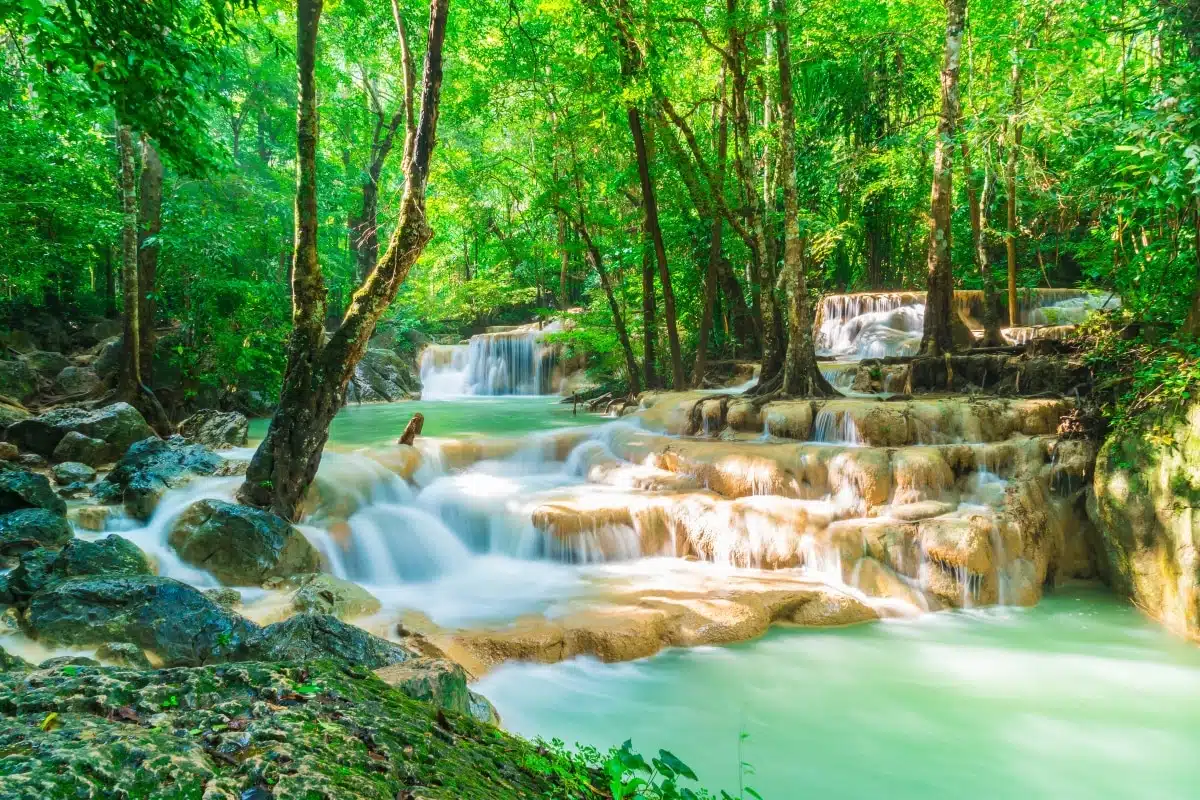
Image Credit: Shutterstock / gowithstock
Khao Sok National Park in Thailand is known for its ancient rainforest, stunning limestone karsts, and the serene Cheow Lan Lake. The park’s diverse landscape offers opportunities for jungle trekking, wildlife spotting, and canoeing. Staying in floating bungalows on Cheow Lan Lake is a highlight, offering a unique way to experience the park’s natural beauty. Khao Sok is a place of tranquility and adventure, where the rainforest’s sights and sounds create a truly immersive experience.
Insider’s Tip
Take a guided hike to learn about the park’s diverse flora and fauna, including the possibility of seeing wild elephants and the world’s largest flower.
How to Get There
The park is accessible from Surat Thani or Phuket by bus or car.
When to Travel
The best time to visit is during the dry season, from December to April.
14. Loango National Park, Gabon
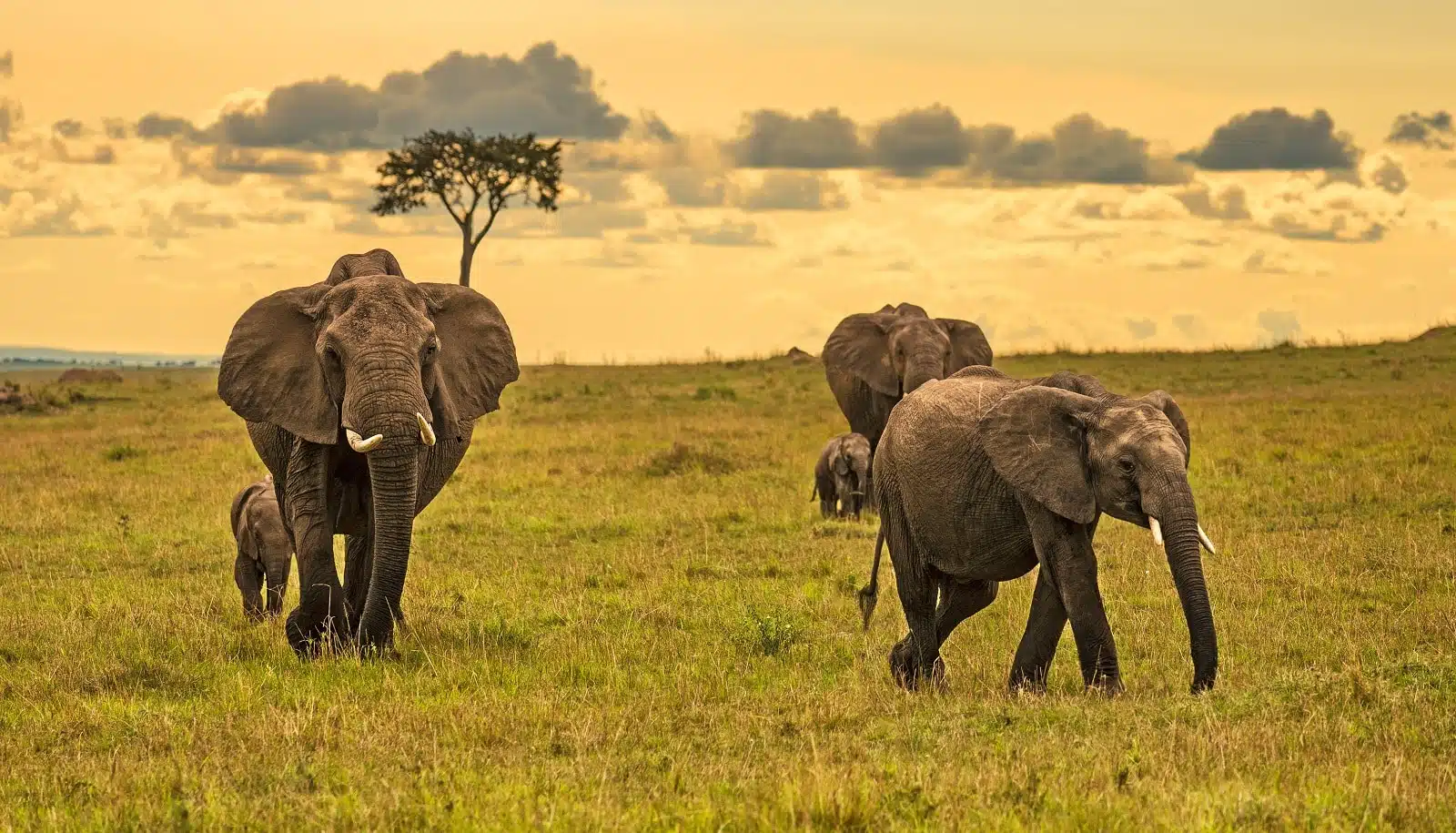
Image Credit: Shutterstock / Nick Fox
Loango National Park in Gabon offers a unique African rainforest experience with its combination of dense jungle, savannah, and pristine beaches. The park is one of the few places in the world where you can see forest elephants and western lowland gorillas in their natural habitat. Loango’s diverse landscape also provides opportunities for beachcombing, birdwatching, and even whale watching off the coast. The park is a testament to the diversity and richness of Africa’s natural environments.
Insider’s Tip
Consider a boat trip along the lagoons for a chance to see a variety of wildlife.
How to Get There
Fly to Libreville, followed by a domestic flight to Port-Gentil or Omboue, then a boat or road transfer to the park.
When to Travel
The dry season from June to September is the best for wildlife viewing.
15. Borneo Rainforest, Malaysia and Indonesia
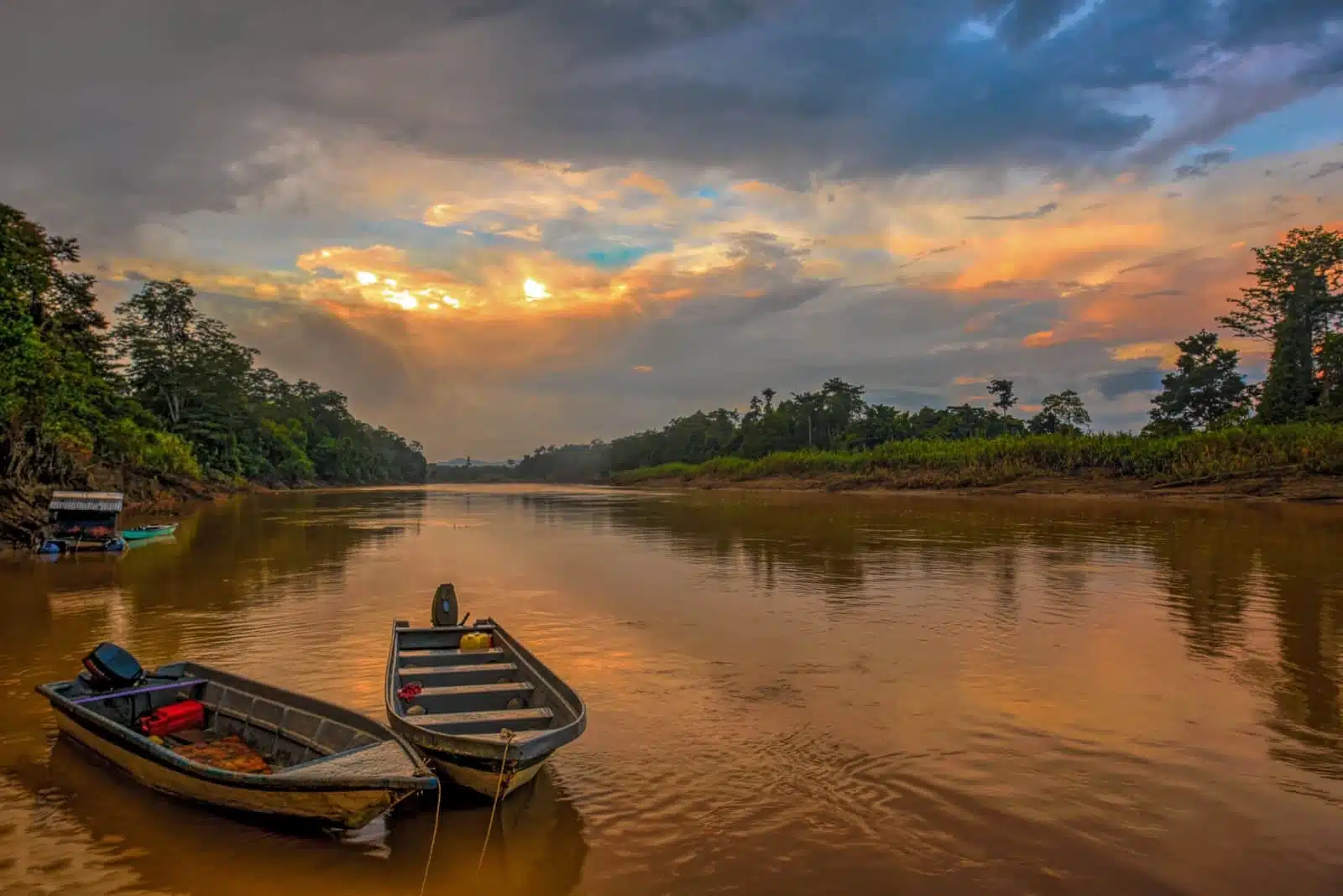
Image Credit: Shutterstock / Ryasyanskiy
The Borneo Rainforest, spanning across Malaysia and Indonesia, is an ecological treasure. This ancient rainforest is home to the iconic orangutan, along with a host of other wildlife like pygmy elephants and clouded leopards. Exploring the rainforest’s dense canopy, winding rivers, and remote villages offers a glimpse into a world that has remained largely unchanged for centuries. The Danum Valley and the Kinabatangan River are particularly noteworthy for their biodiversity and conservation efforts.
Insider’s Tip
Stay at a jungle lodge for a fully immersive rainforest experience.
How to Get There
Fly to Kota Kinabalu (Malaysian Borneo) or Balikpapan (Indonesian Borneo), followed by regional travel to rainforest areas.
When to Travel
The dry season from March to October is the best time for visiting.
The Bottom Line
Exploring the world’s rainforests is an adventure into some of the planet’s most biologically diverse and ecologically important areas. As you journey through these ancient forests, from the Amazon to the Congo and beyond, you’ll witness the incredible variety of life they harbor and understand their critical role in our global ecosystem. Remember, your travels through these rainforests are about the sights you see and the deeper connection and respect you develop for these natural wonders.
More From The Green Voyage
12 Best Practices for Sustainable Travel in 2024 – How to Travel With Minimal Environmental Impact
Unlocking Hotel Perks – A Traveler’s Guide to Maximizing Hotel Reward Programs for Optimal Benefits
Travel Hacks for Frequent Flyers – 6 Tips and Tricks to Make the Best of Air Travel
The post 15 of the World’s Rainforests 2024 – Adventures in the Amazon, Congo, and Beyond first appeared on The Green Voyage.
Featured Image Credit: Shutterstock / Tanja Esser.
For transparency, this content was partly developed with AI assistance and carefully curated by an experienced editor to be informative and ensure accuracy.
Tips for Trip Success
Book Your Flight
Find an inexpensive flight by using Kayak, a favorite of ours because it regularly returns less expensive flight options from a variety of airlines.
Book Your Hotel or Special Accommodation
We are big fans of Booking.com. We like their review system and photos. If we want to see more reviews and additional booking options, we go to Expedia.
You Need Travel Insurance!
Good travel insurance means having total peace of mind. Travel insurance protects you when your medical insurance often will not and better than what you get from your credit card. It will provide comprehensive coverage should you need medical treatment or return to the United States, compensation for trip interruption, baggage loss, and other situations.Find the Perfect Insurance Plan for Your Trip
